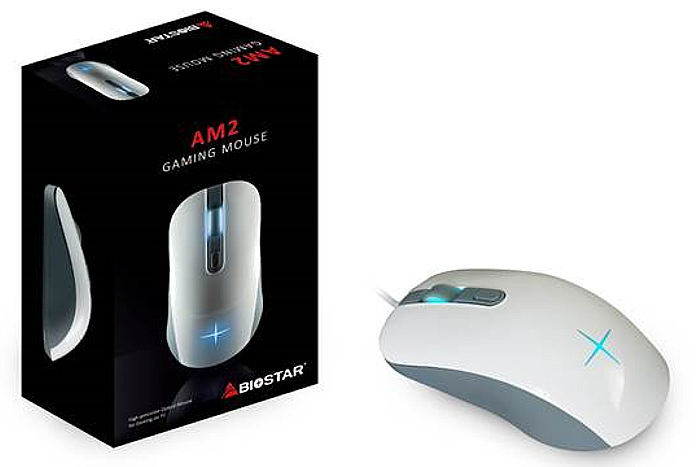
“Designed for comfort, performance and durability, the Biostar AM2 gaming mouse understands the needs of those new to the search for the first gaming mouse and introduces an affordable balance that marries the best of this price point with Biostar’s engineering technology,” the company said.
The new mouse is aimed at eSports gamers and competitive titles. It provides the standard left and right mouse buttons, a click wheel, and a button for changing the peripheral’s sensitivity on the fly. This button is connected to the built-in illuminated logo, which changes color as the user switches sensitivity. These settings consist of 800 DPI (no color), 1,200 DPI (blue), 1,600 DPI (green), and 2,400 DPI (blue-green).
If you’re not familiar with the DPI term, it stands for dots per inch. The higher the number, the faster the cursor will move across the screen. In other words, on a slow sensitivity level, the user will have to physically move the mouse some distance across the desktop to move the cursor from one side of the screen to the other. A very high setting uses very little physical movement on the user’s part to get the cursor to make the same journey.
In PC gaming, this is important along with the need to change the setting on the fly. One moment players might need to crank up the setting during an intense firefight with other opponents, and then reduce the setting to a low number when crouched behind a rock and wanting to pop heads using a sniper rifle.
The good news here is that Biostar created a PC gaming mouse for right- and left-handed players. It’s shaped to fit the needs of gamers using claw- and fingertip-grip styles, sporting a high-gloss mirror UV surface that’s nice and shiny bordered by gray textured sides for easy gripping. It also packs Teflon feet to reduce friction, enabling a smooth experience across the desktop without feeling “slippery.”
According to Biostar, the mouse uses Huano switches promising a lifespan of up to 10 million clicks. The optical sensor is provided by Avago (ADNS-5050), which appears to be best suited for office mice, not PC gaming peripherals. A sensitivity of 2,400 DPI isn’t exactly very high to begin with, although it’s really decent for a $10 peripheral. Then again, the $10 Blackweb gaming mouse sold through Walmart sports a maximum setting of 3,200 DPI.
That all said, here are the hardware specs for Biostar’s new AM2 gaming mouse. Unfortunately, the company didn’t say when the peripheral will be available or where, but we’re betting it will show up on Newegg given the company’s advertised relationship with the online retailer.
| Model | AM2 |
| Color | White |
| Dimension | 4.80(L) x 2.59(W) x 1.49(H) inches |
| Weight | 4.4 ounces |
| Cable Length | 71 inches |
| DPI | 800 to 2,400 |
| Lifespan | 10 million clicks |
| Interface | USB |
| Operating System | Windows 2000/XP/Vista/7/8/8.1/10 |


